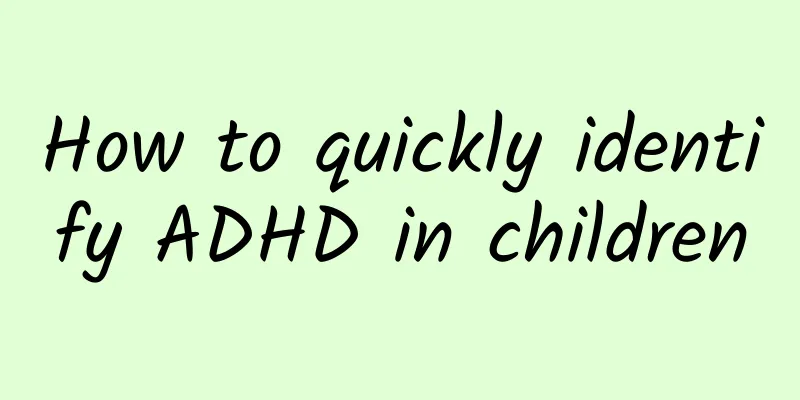What are the symptoms of jaundice in infants and young children?

|
Jaundice in infants and young children is mainly manifested by yellowing of the skin, sclera and mucous membranes, and may be accompanied by symptoms such as drowsiness and poor appetite. In severe cases, medical treatment should be sought as soon as possible to avoid affecting health. This article will discuss its symptoms and coping measures in detail to help parents better identify and deal with jaundice in infants and young children. 1. Yellowing of the skin and sclera The most obvious symptom of jaundice is yellowing of the skin and sclera, which usually starts on the face and gradually spreads to the whole body. The degree of jaundice can be judged by observing the color changes of the skin. If the yellowing is limited to the face and upper body, it is generally mild, but if the yellowing spreads to the abdomen and lower limbs, it may indicate that the jaundice is more serious. 2. Drowsiness and fatigue Infants and young children with high jaundice may experience drowsiness and fatigue. This is because certain factors lead to increased bilirubin levels, which affect the function of the central nervous system. For example, breastfeeding jaundice may make babies easily tired and have a weakened response to external stimuli. 3. Loss of appetite Jaundice may also affect the appetite of infants and young children, causing loss of appetite or even refusal to breastfeed. If this symptom is not improved, it may lead to dehydration or malnutrition, and parents should observe closely. 4. Treatment Methods For mild jaundice, light therapy is an effective and common treatment that helps break down excess bilirubin in the body. For more severe jaundice, immune globulin transfusions or even exchange transfusions may be needed. It is also important to keep your baby well-nourished and hydrated. 5. Seek medical attention promptly If the baby's jaundice is severe, the skin and sclera are obviously darker, and the baby is constantly drowsy and refuses to breastfeed, the doctor should be consulted as soon as possible. The doctor will conduct examinations and treatment to ensure the baby's health. High jaundice in infants and young children can cause symptoms such as yellowing of the skin and sclera, drowsiness and loss of appetite, and medical intervention is required in severe cases. If the above symptoms are found in infants, parents should remain vigilant and handle them according to the doctor's instructions. Timely medical treatment and reasonable feeding are the key to avoiding the adverse effects of jaundice on the health of infants and young children. Through scientific observation and care, the degree of jaundice can be effectively controlled. Paying attention to the overall condition of infants and young children and taking timely actions can escort their healthy growth. |
<<: How to treat jaundice in children and what medicine to take
>>: What are the symptoms of Kawasaki disease in children?
Recommend
Can adults have hand, foot and mouth disease? What are the symptoms?
Adults can indeed get hand, foot and mouth diseas...
How to use folk remedies to stop diarrhea in children? Diarrhea in children is mostly caused by these two reasons
We all hope that children can grow up healthily, ...
What can I eat to treat convulsions?
Convulsion is a common disease in life. When it o...
How to prevent colds in children in autumn 4 tips to effectively prevent colds in children in summer and autumn
The weather is cool and hot at the turn of summer...
Nursing children with pneumonia should not be blind
Among lung diseases, pneumonia can be said to be ...
What are the causes of diarrhea in children? Parents should take care of children with diarrhea in this way
At the turn of spring and summer, the weather cha...
What causes diarrhea in children?
Diarrhea in children is a common gastrointestinal...
How to prevent Kawasaki disease
How can we generally prevent Kawasaki disease? Wh...
What is Hirschsprung's disease in the newborn?
Hirschsprung's disease is a congenital digest...
What to do if your two-month-old baby coughs
There are many reasons that can cause a baby to c...
Symptoms of congenital polio
We should pay close attention to babies' illn...
What is the normal value of jaundice in infants and young children?
Determine the degree of jaundice. Parents can obs...
What causes acute laryngitis in children?
As soon as the weather turned cold, the child fel...
Treatment of pneumonia in children
Pneumonia is a relatively common disease in our l...
How to treat pathological jaundice? What is the normal value of transcutaneous jaundice measurement?
Neonatal jaundice occurs after birth and is gener...









